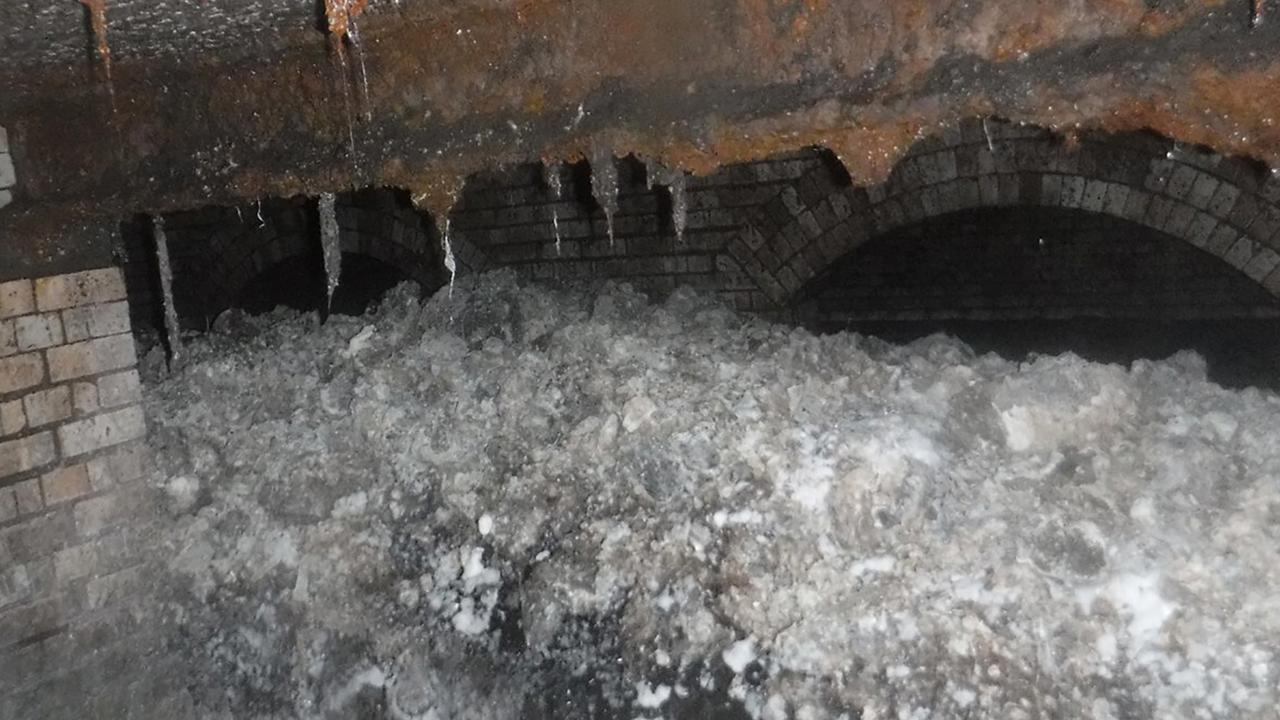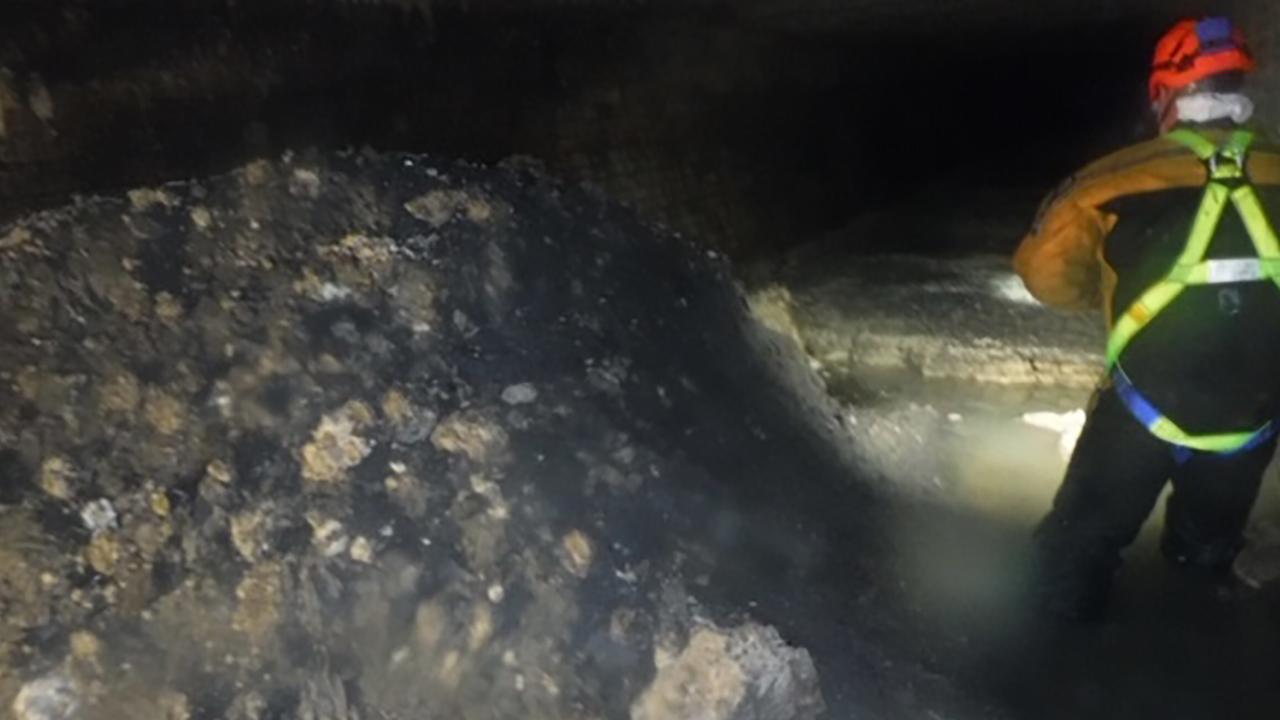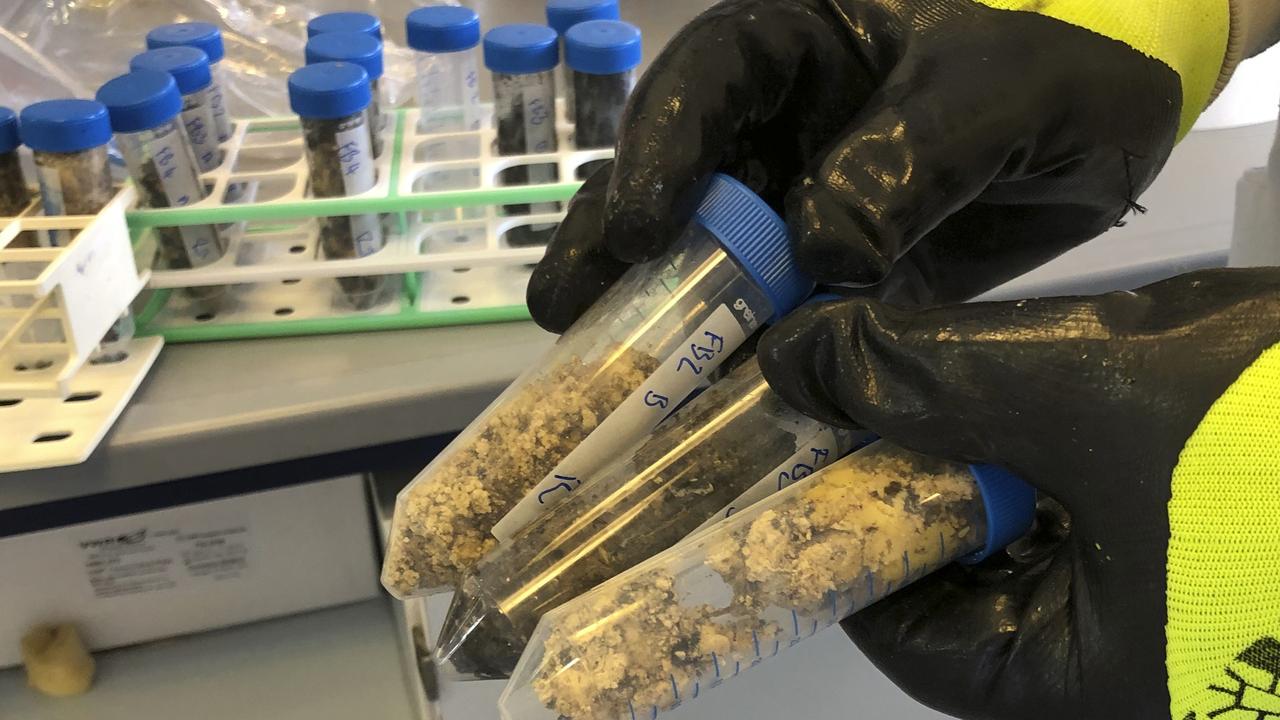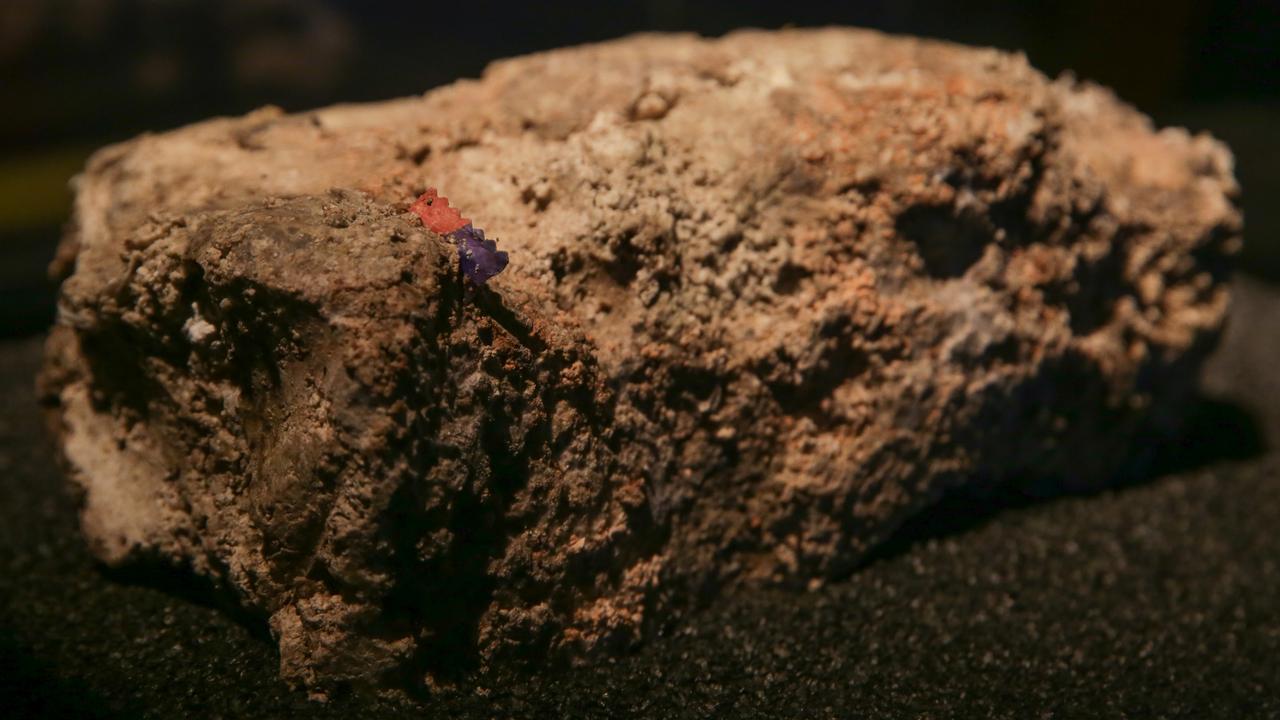Scientists reveal surprising detail about monster ‘fatberg’
Scientists did an autopsy on the 250m long, 130-tonne fatberg discovered beneath London and the results held some surprises.
Scientists have finally answered the puzzling question about what’s in the monster fatberg discovered beneath London.
A fatberg, while not terribly pleasant and a big headache for sanitation workers, is not a health or environmental hazard, scientists have found.
An analysis of a giant fatberg longer than the height of the Tower of Pisa found in sewers in western England reveals it to have been comprised of cooking fats, hygiene products and a few random items including false teeth.
University of Exeter scientists said Friday there were no detectible levels of toxic chemicals in the fatberg, which filled 36 tanker loads when it was removed from underneath the seaside town of Sidmouth.
Professor John Love said the team was “rather surprised to find that this Sidmouth fatberg was simply a lump of fat aggregated with wet wipes, sanitary towels and other household products that really should be put in the bin and not down the toilet.”


The 250m long, 130-tonne mass of congealed sewage, oil, wet wipes and sanitary products shocked the world when it was discovered in September 2017 blocking the city’s narrow Victorian sewers.
The “total monster” weighed more than 11 double decker buses and stretched the length of Tower Bridge. It took a team of eight “flushers”, working nine hours a day, seven days a week in cramped and hazardous conditions, more than two months to remove.


Chunks of the toxic mass were air-dried, analysed and put on display at the London Museum last year.
Museum of London collection care manager Andy Holbrook, who handled the fatberg wearing gloves and a mask to protect from disease, said the “fascinatingly grim” object still had flies living in it five months on.
“It smelt like a blocked toilet I suppose, which was not great but it wasn’t as overwhelming and putrid smell as I was expecting. We saw it at a sewage works, and the sewage works smelt worse than the fatberg itself,” he told news.com.au last year.
He said the fatberg slice has changed significantly since it was first removed in October 2017 when it still had a “waxy surface feel” but now feels more like a pumice stone.
“It’s dried out over three months. We have seen it change colour from brown to more of an ivory colour.”
The piece that was on display was the only remaining chunk of the monster fatberg that was broken up and used as biofuel to power a London bus.
— with AP



